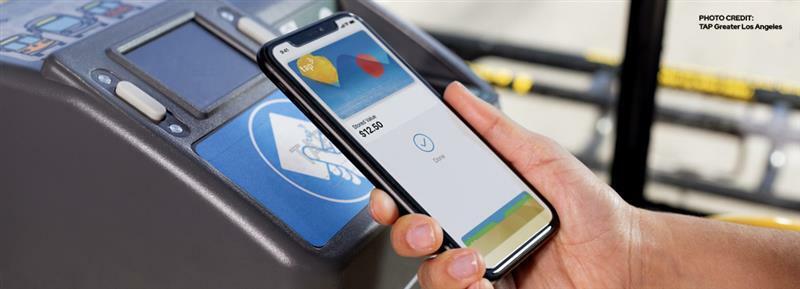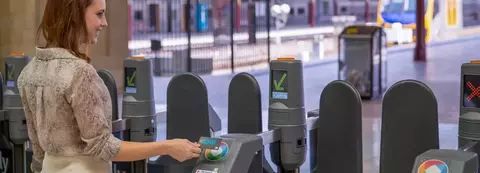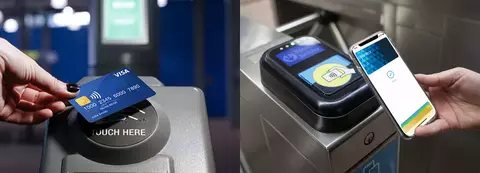Contactless Payments is The New Norm
Contactless payments changed the game for public transit riders worldwide, making it easier than ever to hop on a bus or train with just a tap. The same technology that lets you tap to pay at the store, is now used by major cities globally to make travel simpler and easier. No more fumbling for cash or figuring out complicated ticket and transfer options – today’s riders expect a seamless and hassle-free travel experience.
By letting passengers use the contactless bank cards or devices they already carry as their ticket, transit agencies can streamline operations all while giving riders the frictionless experience they expect. Contactless payments eliminate the costs and headaches of managing a legacy system such as maintenance, card issuing and cash handling
The Complexity Behind a Contactless Payment System
But here’s the thing – it’s not always as simple as investing in this technology and flipping a switch. Traditionally these technology transformations come with expensive procurement processes, highly customized solutions, and lengthy transition periods – all while transit agencies and local governments undergo intense public scrutiny. For each success story like London, New York, Chicago, San Francisco and Sydney, there are stories of deployments characterized by delays and failures to deliver open payment functionalities.
It's no wonder some cities may stop to ask: is it really worth it? Convenience can come with a cost. Traditional proprietary account-based systems can be expensive to deploy, often involving a complete design, build, operate and maintain process. Even when reusing the agency's existing hardware, the bill adds up. That is why historically you find these fare collection systems the domain of larger cities and regions with high ridership volumes and complex multimodal networks, that can afford a system built to meet their agency’s unique requirements.
But where does this leave everyone else? What about cities whose fare collection systems are still fit for purpose, but don’t offer contactless payments? What about transit agencies who want these features but don’t require this level of complexity?
For some, the answer seems obvious: why can’t we just make these solutions cheaper? Remove the complexity, lose the customization, drop features, and lower the cost…right? Wrong. This race to the bottom created cheaper solutions, but this ‘one size fits all’ approach also created solutions that neglected the reality that our cities are not ‘one size fits all’ and neither are our riders. This approach can end up excluding vulnerable riders and creating hidden costs when the lack of system flexibility fails to serve city’s changing needs over time.
Balancing Costs, Convenience, and Flexibility
Progressive Upgrades to Contactless Payments
Fortunately, recent payments innovations mean agencies are no longer faced with the single daunting decision of a full system replacement (and potential vendor lock-in). Instead, it is now possible for cities of all sizes to pursue a more progressive upgrade path. Instead of a ‘big bang,’ agencies can make the most of their existing assets, while quickly and easily implementing the new capabilities that mean the most to their riders. An open payment overlay to rapidly enable contactless payments without a complete account-based back-office upgrade is just one of many options agencies can explore along their upgrade journey.
Sydney used this to great effect to enable contactless payments only a few years after a major investment was made into their Opal card system. Los Angeles used a similar progressive upgrade path giving customers a new mobile app access to a virtual tap card to enable a contactless payment experience while still benefiting from the investments made in their legacy tap system. As solutions can be piecemealed from across multiple vendors, agencies retain the flexibility to plug and play ensuring the best solutions for their riders
 Cherriots Contactless Payments
Cherriots Contactless Payments
The Mobility SaaS Platform
For agencies who are ready to replace their system, but don’t want to invest in a bespoke back-office, a SaaS solution is a great option. SaaS platforms like Umo deliver the benefits of large-scale transport platforms at a lower cost. While giving riders much-loved features including mobile apps, trip planning and contactless payments, they also ensure the full ridership base is addressed with cash, paper tickets, smartcards, and reseller network options.
SaaS solutions can deliver tremendous value to both cities and regional networks of all sizes. Not only do they help agencies reduce operating costs as they don’t require extensive IT support, but they allow agencies to benefit from a constant product release roadmap to allow for a continuously evolving customer experience. By choosing a platform solution, agencies do buy into the solution as-is, but this allows for faster deployments with no additional fees. While platform solutions do offer less flexibility than bespoke fare collection systems, agencies can tailor their solution with optional platform add-ons overtime. With the right platform partner they can also have an active voice in shaping the product’s future roadmaps.
Of course, not every situation is clear cut, and every city needs to decide which solution fits their unique needs and the needs of their riders. Luckily, no matter what your city or region looks like, there are now a whole host of options out there to enable the absolute best customer experience!




